Media Contact
Jeff Goldstein, SSEP Creator and Program Director, jeffgoldstein@ncesse.org, cell: 301-395-0770
Downloadable Media Package Available Below: includes list of SSEP Mission 9 to ISS participating communities and schools in U.S. and Canada, experiment summaries, and student researcher teams
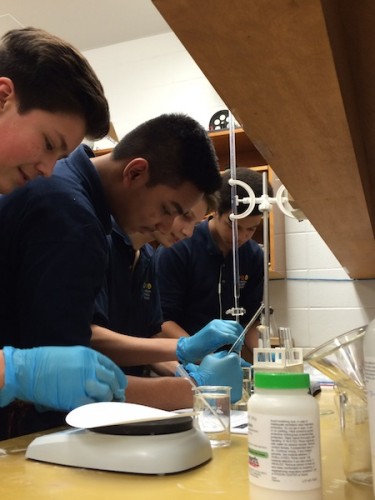
Calgary, Alberta, Canada: student researchers dilute hydrochloric acid to test the solubility level of gum Arabic.
What’s Happening: This page provides supporting information for the Student Spaceflight Experiments Program (SSEP) Endeavor payload of 21 student experiments flying on SpaceX CRS-10. Endeavor is formally the experiments payload for the SSEP Mission 9 to ISS flight opportunity, which is SSEP’s 11th flight opportunity to fly student experiments to Low Earth Orbit since 2010.
Each Endeavor experiment reflects the culmination of a formal research competition held in each of 21 communities across the U.S. and Canada. In each community at least 300 students were formally engaged in microgravity experiment design and formal proposal writing, with typically 60-100 flight experiments proposed. Through a formal two step review process, one experiment was selected for flight for each community – so that each community is truly given its own space program. The National Review Board that selected the Mission 9 flight experiments met at the Smithsonian National Air and Space Museum in December 2015.
Student Researchers Attending Launch at KSC – Available for Interview
There are 44 (of 84) SSEP student researchers traveling down for the launch of their experiments, representing 9 of the 21 Mission 9 communities: East Lyme, CT; Hillsborough County, FL; Boise, ID; Traverse City, MI; Springfield, NJ: Buffalo-Niagara, NY; North Charleston, SC; Knox County, TN; and Bellevue, WA.
Mission 9 to ISS Historical Data
Number of Participating Communities: 21
Scope: 11,900 grade 5-12 students fully engaged in experiment design
Number of student team proposals received: 2,466
Number of experiments selected for flight: 21, one for each community
Announcement of Opportunity: March 20, 0215
Experiment design competition and proposal writing: September 7 – November 6, 2015 (9 Weeks)
Flight experiment selection: December 17, 2015
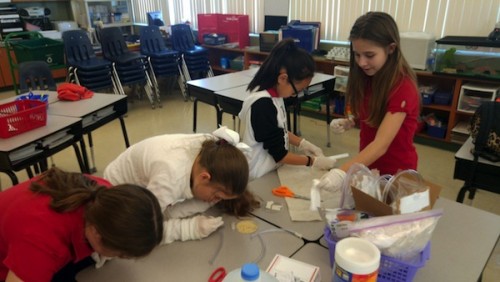
Hillsborough, FL: The girls are investigating the amount of quinoa seeds, water, and preservative they would like to use by running trial experiments.
SSEP National Program Summary
Launched in June 2010 by the National Center for Earth and Space Science Education (NCESSE) in strategic partnership with NanoRacks LLC, SSEP was designed as a model U.S. National STEM (Science, Technology, Engineering, and Math) education program that immerses typically 300 (grade 5-16) students across a community in every facet of authentic scientific research of their own design, using a highly captivating spaceflight opportunity on the International Space Station (ISS).
The Smithsonian National Air and Space Museum, Center for the Advancement of Science in Space (CASIS), and Subaru of America, Inc., are U.S. National Partners on SSEP. Magellan Aerospace is a Canadian National Partner on SSEP.
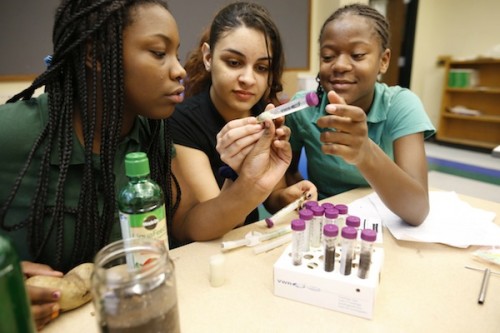
Buffalo-Niagara, NY: Shaniylah Welch (Co-investigator), Gabriella Melendez (Principal Investigator) and Toriana Cornwell (Co-investigator) examine one of the experiment samples.
Each participating community is provided a flight certified mini-laboratory capable of supporting a single microgravity experiment, and all launch services to fly the mini-lab to ISS, and return it safely to Earth for harvesting and analysis. Mirroring how professional research is done, student teams across the community submit research proposals, and go through a formal proposal review process to select the community’s flight experiment. The design competition – from program start, to experiment design, to submission of proposals by student teams – spans 9 weeks. Students can design experiments in diverse fields, including: seed germination, crystal growth, physiology and life cycles of microorganisms (e.g. bacteria), food studies, and studies of micro-aquatic life. Content resources for teachers and students support foundational instruction on science in microgravity and experimental design. Additional SSEP program elements leverage the experience to engage the entire community, embracing a Learning Community Model for STEM education.
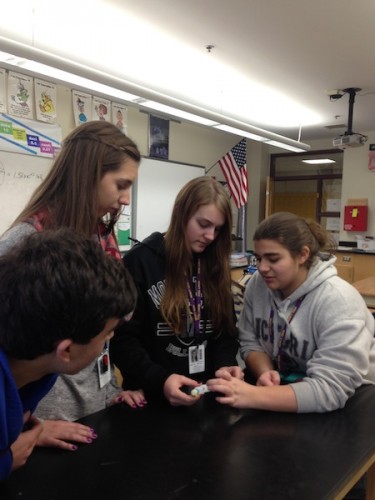
Fitchburg, MA: students looking at a loaded Type 3 FME mini-lab serving as the ground truth experiment.
SSEP National Program Impact to Date
Since program inception in June 2010, there have been 13 SSEP flight opportunities—SSEP on STS-134 and STS-135, which were the final flights of Space Shuttles Endeavour and Atlantis; and SSEP Missions 1 through 11 to ISS. A total of 142 communities have participated in the program, reflecting 37 States and the District of Columbia in the U. S. and 4 Provinces in Canada. Thus far 35 communities have participated in multiple flight opportunities – one community is conducting their 8th flight with Mission 11 – reflecting the sustainable nature of the program. (Note: details of all SSEP flight opportunities can be found on the SSEP Flight Opportunities to Date page.)
Through the first thirteen flight opportunities, a total of 74,680 grade 5-16 students across 1,391 schools were fully immersed in microgravity experiment design and proposal writing, 16,261 flight experiment proposals were received from student teams, and 206 experiments were selected for flight. A total of 153 experiments have flown through SSEP Mission 8. Another 53 experiments are expected to launch in 2017: 21 experiments as the Mission 9 Endeavor payload on SpaceX-10, 11 experiments as the Mission 10 Casper payload on SpaceX-11, and 21 experiments as the Mission 11 America payload on SpaceX-12 – all three launching from Cape Canaveral Air Force Station, FL, adjoining Kennedy Space Center. Over 100,000 more students across the entire grade preK-16 pipeline were engaged in their communities’ broader STEAM experience, submitting 65,720 Mission Patch designs.
Help Us Get Word Out for Next Flight Opportunity
SSEP Mission 12 to ISS Announcement of Opportunity for schools across U.S. and Canada to be released February 23, 2017.
Program start: September 2017
9-Week Experiment design competition: Fall 2017
Flight to ISS: Spring 2018
MEDIA PACKAGE for Mission 9: Downloadable Documents (PDFs)
SSEP National Program Overview for Congressional Briefings on Capitol Hill
Mission 9 Flight Experiments Summary Table
Mission 9 Flight Experiments: Research Teams and Experiment Descriptions – an experiment-by-experiment summary including community, school, grade level, research team (PIs, Co-Is and Collaborators), and experiment abstract
Relevant SSEP Web Links
NASA Media Coverage of SSEP Program page
Over 1,000 media articles, see SSEP In the News pages
Feature Article in Scientific American, February 17, 2014
Mission 9 National Announcement of Opportunity, March 20, 2015
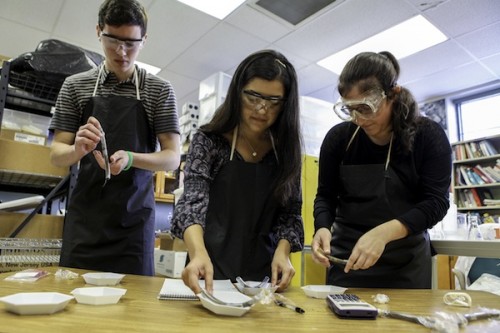
McAllen, TX: Juan Pablo, Sofia and Sabrina are conducting experiments to determine germination failure rates in tomato seeds to inform how they will pack their FME mini-lab.
The Student Spaceflight Experiments Program (SSEP) is a program of the National Center for Earth and Space Science Education (NCESSE) in the U.S., and the Arthur C. Clarke Institute for Space Education internationally. It is enabled through a strategic partnership with DreamUp PBC and NanoRacks LLC, which are working with NASA under a Space Act Agreement as part of the utilization of the International Space Station as a National Laboratory. SSEP is the first pre-college STEM education program that is both a U.S. national initiative and implemented as an on-orbit commercial space venture.
The Smithsonian National Air and Space Museum, Center for the Advancement of Science in Space (CASIS), and Subaru of America, Inc., are U.S. National Partners on the Student Spaceflight Experiments Program. Magellan Aerospace is a Canadian National Partner on the Student Spaceflight Experiments Program.
